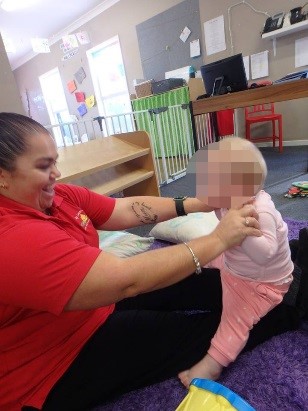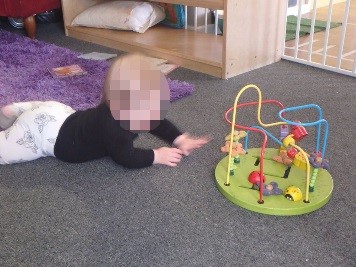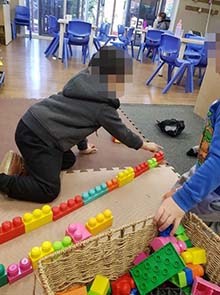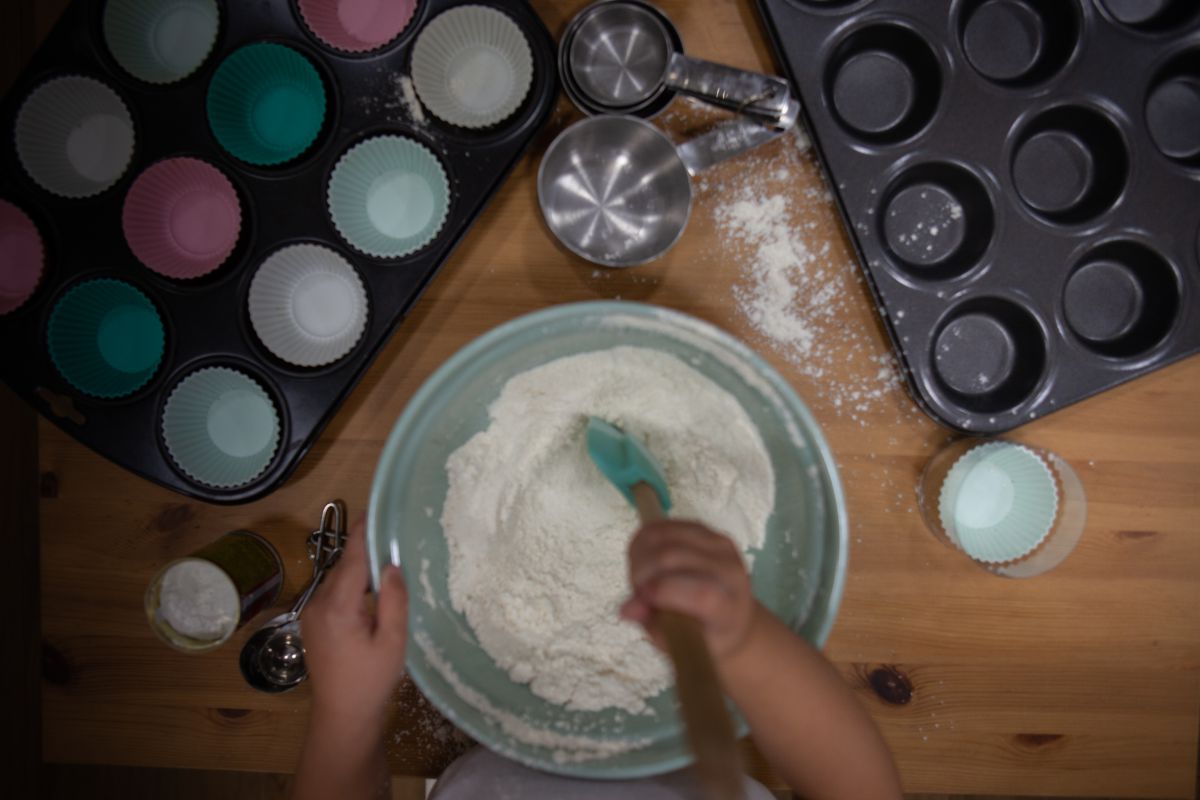Educators are deliberate, purposeful, and thoughtful in their decisions and actions.
Go through the checklist and be honest so your Educational Leader and Nominated Supervisor know how to help you be the best.
E = Embedded, yes, I do that ALL the time.
K = We know we need to do that, but we don’t do
it all the time.
T = Please teach me how to do it or improve my understanding of why we need to do it.
| Intentional teaching | Edu 1 |
|---|---|
| Educators | |
| Do you recognise that learning occurs in social contexts and that interactions and communication is vitally important for learning? | |
| Do you use strategies like modelling and demonstrating, open-ended questioning, speculating, explaining and engaging in sustained shared conversations to extend children’s thinking and learning? | |
| Do you provide time, space and learning experiences that encourage thoughtful and challenging conversations with children? | |
| Do you engage with children by listening, showing interest and asking open-ended questions to encourage thinking and conversation? | |
| Do you use a range of communication strategies that involve explanations, speculation and problem solving? | |
| Do you collaborate with children to develop further knowledge and skills? | |
| Do you provide instructional/intentional support to children during play, routines and transitions? | |
| Are you fully present and mindful of opportunities to provide children time and space to ‘be’? | |
| Can you show plans and strategies you use to promote learning across all aspects of the program? | |
| Can you show how intentional teaching strategies are used to extend children’s play, including spontaneous experiences? | |
| Can you show how changes in practices have been implemented to support a child requiring additional assistance or to build respect for diversity? | |
| Can you show and explain why you decide when to use a particular intentional teaching strategy, including the intentional positioning of resources or structuring of the learning environment? | |
| Can you show how you make conscious decisions in a leisure based program to promote learning and wellbeing? | |
| Do you have team meetings when planning for intentional teaching? |
Case Study 1 – “I touch, you touch”
 Karen (Educator) planned an activity today to help the children in Tommy’s Turtle’s identify their body parts. The children waited for their turn as they watched and listened to Karen as she began to point and say, “I touch my chin, my head, my cheek, my feet, my ears, my nose and mouth.”
Karen (Educator) planned an activity today to help the children in Tommy’s Turtle’s identify their body parts. The children waited for their turn as they watched and listened to Karen as she began to point and say, “I touch my chin, my head, my cheek, my feet, my ears, my nose and mouth.”
The children watched closely as Karen pointed to the body parts. Karen engaged the children in play with words by saying the names of the body parts and helping them to point to that part.
Nevaeh, Ivy and Elijah moved closer to Karen as she took turns with the children by taking their hands as she said “Nevaeh’s head, Ivy’s ears, Elijah’s head” while pointing to the correct body part then continuing on to the rest of the body parts.
Ivy giggled as she looked at Karen each time she touched a different body part. Nevaeh, Ivy and Elijah were connected to Karen in a positive and happy way by showing lots of smiles and looking at Karen as she talked to them.
Case study 2 – I can do it
This afternoon Bryleigh was pushing herself up on her hands and tippy toes, trying to move forward. Karen placed the bead maze away from Bryleigh to encourage her to move herself closer to it. Karen sat near the bead maze encouraging Bryleigh by saying “Come on Bryleigh, you can do it.” Bryleigh actively responded by giving Karen a big smile as she continued to push herself forward with her feet. During this experience Bryleigh had a rest when needed by laying flat on the floor, continuing to look at the maze.
 Bryleigh expressed a wide range of emotions during this task as she showed excitement and curiosity when Karen moved the flowers and shapes along the bars. “Look at the different colours Bryleigh” Karen said.
Bryleigh expressed a wide range of emotions during this task as she showed excitement and curiosity when Karen moved the flowers and shapes along the bars. “Look at the different colours Bryleigh” Karen said.
Bryleigh was persistent with this challenging experience as she was determined to get to the bead maze. When she finally reached it, she looked at Karen with a big smile.
Case study 3 – Using the bubblers!
Today during our adventure out in the Toddler yard, the children enjoyed running around and exploring all different activities that were available for them to play with. The children’s favourite activity was running around the path chasing each other. All the running made the children thirsty and Brody and Lily came running over to Eliza and were pointing up to the bubblers, communicating their need for a drink. Eliza, Lily and Brody walked up to the bubblers together. Eliza explained to Brody and Lily that for the bubblers to work you need to use your hand to push down on the handle for the water to come out the spout. Eliza extended the learning by having a conversation with both Brody and Lily about making sure we drink plenty of water throughout the day to maintain a healthy body.
Case study 4 – Experiment time!
Magnets and the way they either attract or repulsed each other were a great interest to children. See curriculum 12.2.18 & 13.2.18. Eliza (educator) reflected about the success of the lesson and planned an experience to extend the concept of materials separating, but this time with liquid. Eliza gathered Reuben, Ethan, Eddie and Brody around in a small group on the floor as she prepared all the ingredients. Brody helped Eliza carefully squeeze 2 blobs of food dye into the water and mix it with the paddle pop stick. Once all the food dye was mixed into the water it was time for the oil to be poured into the water. Ethan confidently stood up beside Eliza and helped pour some oil into the jug of water. Reuben, Ethan, Eddie and Brody were all amazed how the oil and water did not mix together. Eliza had a group discussion using scientific language with the children to explain and discuss that the oil and water do not mix as water molecules are polar and the oil molecules are non-polar. So, they do not have a force that brings them together to mix. Eliza asked the children “Do you see the oil floating on top?” The children replied non-verbally with a grin on their faces. Eliza explained that the oil floats on top as it has a lower density then water, so it will always float on top.
Case Study 1 – Patterns in play
 Miss Tara used Saxon and Aaron’s interest in building and Lego to introduce the concept of patterns. The activity sparked Torah’s curiosity and Torah asked Miss Tara “can I do it too Tara?” Miss Tara happily welcomed Torah to the activity and asked the children “does anyone know what a pattern is?” The children were unsure, so Miss Tara explained “a pattern is something that repeats itself. It does the same thing over and over again.” Miss Tara used the Lego to illustrate this concept by placing a red brick on the floor then a red brick next to it. Miss Tara asked, “if we want it to be the same which colour should come next?” Saxon answered “yellow”.
Miss Tara used Saxon and Aaron’s interest in building and Lego to introduce the concept of patterns. The activity sparked Torah’s curiosity and Torah asked Miss Tara “can I do it too Tara?” Miss Tara happily welcomed Torah to the activity and asked the children “does anyone know what a pattern is?” The children were unsure, so Miss Tara explained “a pattern is something that repeats itself. It does the same thing over and over again.” Miss Tara used the Lego to illustrate this concept by placing a red brick on the floor then a red brick next to it. Miss Tara asked, “if we want it to be the same which colour should come next?” Saxon answered “yellow”.
Miss Tara placed the yellow brick down and exclaimed “you are right Saxon. It is yellow. See, it goes yellow, red, yellow”. Miss Tara then asked so which colour should go next?” Torah identified “red”. Torah and Saxon both showed they are beginning to understand and recognise patterns by identifying the next colour in the sequence. (L/O 5.4)
Miss Tara laid out another pattern, this time using three different coloured blocks green, pink, yellow. Miss Tara asked Saxon, Aaron and Torah if they could identify which colour comes next. Again, Saxon recognised the pattern and correctly answered “green.” Miss Tara asked Aaron, “which do you think comes after the green Aaron?” Aaron told Miss Tara “pink”. Miss Tara placed a pink brick down. Aaron observed “no not that pink, it’s a different pink!” Miss Tara laughed and found a brick which was the same shade pink as the first one. Miss Tara, Saxon, Torah and Aaron spent time making more patterns and arranging the bricks in a line. Miss Tara wanted to include numeracy into play and asked Aaron if he could count all the bricks in the line. Aaron confidently counted all 17 bricks. Saxon saw this and said “look I can count; 1, 2, 3, 4, 5, 6” as he pointed to each brick. Torah showed Miss Tara “I can count 1, 2, 3, 4, 5, 6, 7!” as she pointed to the bricks.
Case Study – No intentional teaching
Educators were concerned with babies’ care and routine and hadn’t thought about how their practice could be ‘intentional teaching’ as the children were too young. Other educators didn’t think young children could understand scientific concepts, so no intentional scientific lessons were planned.
 Exceeding Theme Core
Exceeding Theme Core
All educators are consistently deliberate, purposeful, and thoughtful in all of their decisions and actions, and confidently make curriculum decisions to ensure each child’s participation, learning and development. All educators consistently draw on families’ or communities’ understanding of each child’s strengths, ideas, culture and interests to extend their learning and development, and regularly reflect, individually and with each other, on their educational practice.
Where is your practice compared to the above statement?
[/ms-user]

